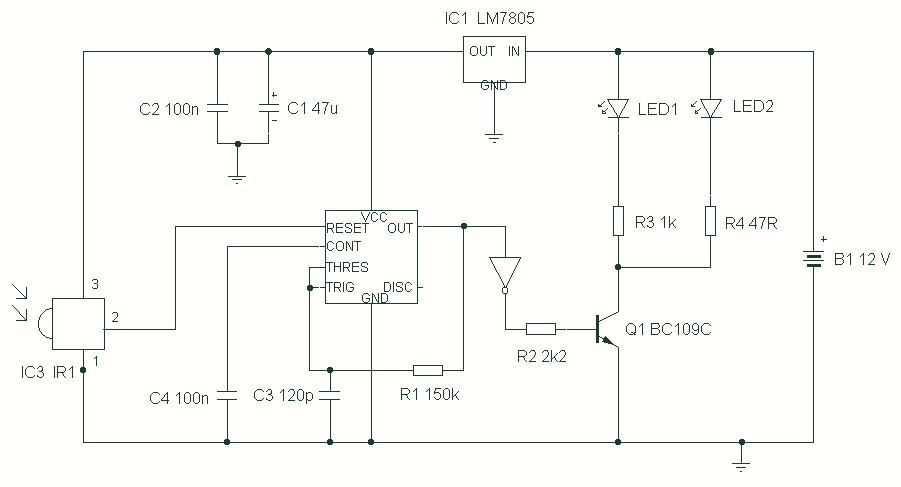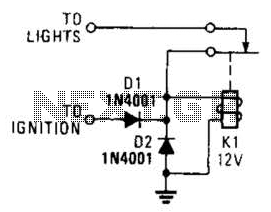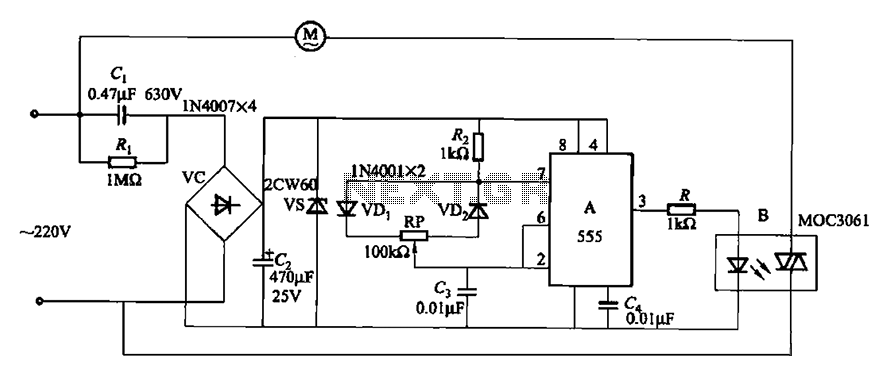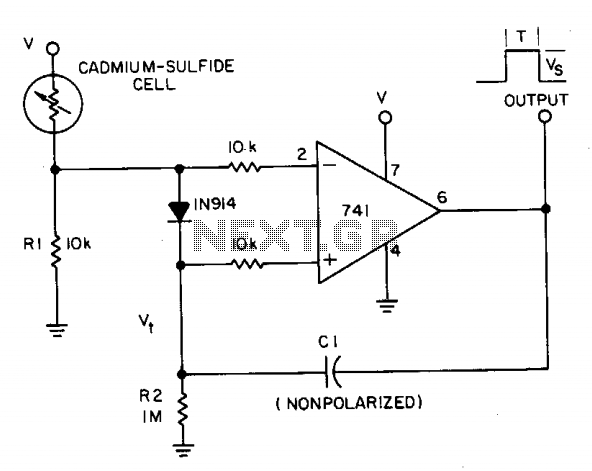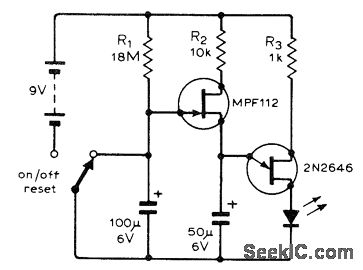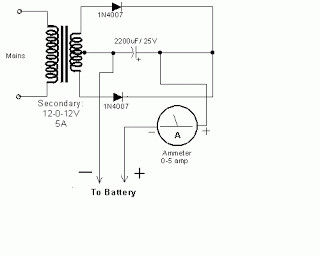
MP1826 by the LM567 and precision timer circuit
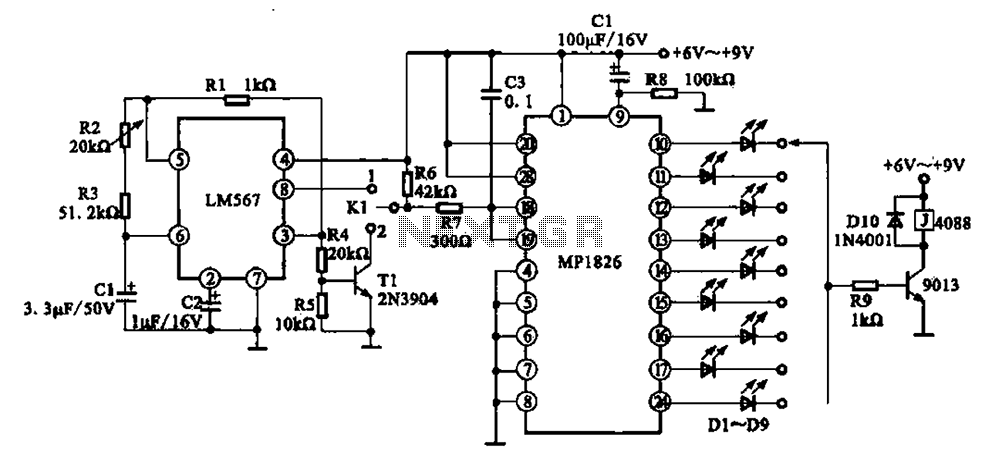
A precision circuit utilizing the LM567 timer, specifically the MPI826, where the LM567 functions as a dual-band oscillator. The MP1826 serves as a divider in the circuit, allowing the output signal from the LM567 to achieve extended timing. The oscillation frequency of the LM567 can be adjusted in real-time.
The LM567 is a versatile phase-locked loop (PLL) device that can be configured as a dual-band oscillator in various applications, particularly in communication systems. In the MPI826 configuration, the LM567 operates by generating two distinct frequency outputs, which can be finely tuned to meet specific requirements.
The MP1826 component functions as a frequency divider, effectively reducing the frequency output from the LM567. This division is critical for applications requiring lower frequency signals while maintaining signal integrity. The output from the LM567 can be adjusted in real-time, which provides flexibility in applications where frequency modulation is necessary. This feature allows for dynamic changes in the operating conditions without the need for physical circuit modifications.
The circuit's design emphasizes precision and stability, making it suitable for applications that demand high accuracy in timing and frequency generation. The ability to adjust the oscillation frequency in real-time enhances the circuit's adaptability, allowing it to respond to varying operational demands efficiently. Overall, the combination of the LM567 and MP1826 in the MPI826 circuit exemplifies a robust solution for dual-band oscillation and frequency division tasks in electronic systems.A precision shown by the LM567 timer circuit MPI826 constructed and where LM567 used as a dual-band oscillator. MP1826 acts as a divider in the circuit, the output signal by di viding LM567 achieve long timed. LM567 adjustment of the oscillation frequency can be changed in real time rate time
The LM567 is a versatile phase-locked loop (PLL) device that can be configured as a dual-band oscillator in various applications, particularly in communication systems. In the MPI826 configuration, the LM567 operates by generating two distinct frequency outputs, which can be finely tuned to meet specific requirements.
The MP1826 component functions as a frequency divider, effectively reducing the frequency output from the LM567. This division is critical for applications requiring lower frequency signals while maintaining signal integrity. The output from the LM567 can be adjusted in real-time, which provides flexibility in applications where frequency modulation is necessary. This feature allows for dynamic changes in the operating conditions without the need for physical circuit modifications.
The circuit's design emphasizes precision and stability, making it suitable for applications that demand high accuracy in timing and frequency generation. The ability to adjust the oscillation frequency in real-time enhances the circuit's adaptability, allowing it to respond to varying operational demands efficiently. Overall, the combination of the LM567 and MP1826 in the MPI826 circuit exemplifies a robust solution for dual-band oscillation and frequency division tasks in electronic systems.A precision shown by the LM567 timer circuit MPI826 constructed and where LM567 used as a dual-band oscillator. MP1826 acts as a divider in the circuit, the output signal by di viding LM567 achieve long timed. LM567 adjustment of the oscillation frequency can be changed in real time rate time
